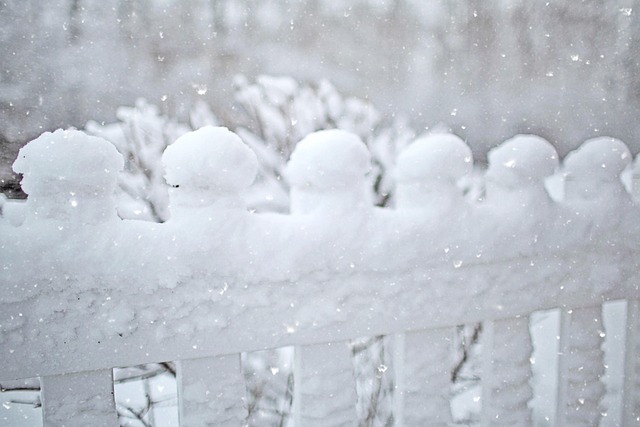For New Bedford, Massachusetts homeowners looking to install a new fence, navigating the process can seem daunting. This comprehensive guide offers practical DIY tips for every stage of the project, from understanding your fencing options suitable for New Bedford’s unique yard challenges to finishing touches that ensure longevity. By mastering measurement, gathering the right tools and materials, and following expert advice on post-setting and panel attachment, you’ll create a robust and aesthetically pleasing fence that enhances your outdoor space.
- Understanding Your Fence Options for New Bedford Yards
- Measuring and Planning: A Step-by-Step Guide
- Tools and Materials Required for Installation
- Setting Posts: The Foundation of a Solid Fence
- Attaching Panels: Creating a Strong, Secure Barrier
- Finishing Touches and Maintenance Tips for Longevity
Understanding Your Fence Options for New Bedford Yards
When it comes to fencing your New Bedford, Massachusetts yard, there are numerous options to consider. The first step is to assess your space and determine the best fit. Wood fences offer a classic aesthetic with various styles like picket, privacy, or post-and-rail, each catering to different preferences and budgets. For a low-maintenance alternative, vinyl fencing is durable and comes in many colors and designs. Chain link fences are ideal for areas needing security and visibility, while iron or metal fences add a touch of elegance and can be custom-designed. Consider the size of your yard, desired privacy level, and long-term maintenance preferences to narrow down the choices.
Additionally, regional climate plays a role in selection. In New Bedford, you might want to opt for materials resistant to salt air and moisture if close to the coast. Local regulations should also be checked to ensure compliance with zoning laws and property line restrictions. Understanding these factors will make the DIY fence installation process smoother and more successful.
Measuring and Planning: A Step-by-Step Guide
Before you start installing your DIY fence, accurate measuring and planning are crucial steps. Begin by identifying the perimeter of your desired fence area using a tape measure. Mark the points where the fence will meet existing structures or other fences. Next, decide on the height and style of your fence, considering local regulations and your personal preferences. Using these measurements, create a basic layout or sketch to plan the placement of posts, rails, and panels.
Mark the post locations along the perimeter, ensuring they align with the center points between existing structures. This layout will guide your material purchases and installation process, helping you stay organized and efficient throughout the project.
Tools and Materials Required for Installation
To tackle your New Bedford, Massachusetts fence installation project effectively, gather the necessary tools and materials beforehand. This typically includes a measuring tape, wooden posts (treated for outdoor use), fence panels or pickets, brackets or post-set, concrete mix and molds, a hammer or impact driver, drill, level, string line, and safety gear like gloves and eye protection.
Choose tools based on the type of fence you’re installing—wooden, vinyl, or chain link—as some may require specialized equipment. Ensure all materials are suitable for local weather conditions to prevent premature deterioration.
Setting Posts: The Foundation of a Solid Fence
Setting fence posts is a crucial step in DIY fence installation, as it forms the foundation for your new fence. In New Bedford, Massachusetts, with its diverse landscape and potential soil variations, understanding this process is key to ensuring a sturdy barrier. Begin by identifying the straightest, most level ground for your fence line. Mark out the perimeter using string or flags to ensure accuracy. Then, dig holes for each post, making sure they are deep enough—typically one-third to half the height of the post—to provide stability and prevent shifting. The depth should account for frost heaves during winter months. Place a level in the hole to verify its flatness before inserting the post.
Attaching Panels: Creating a Strong, Secure Barrier
When attaching fence panels, make sure each one is securely fastened to both the posts and the ground. Start by positioning the panel at the desired height, then use brackets or screws to fasten it to the posts. Dig small holes for the screws if necessary, to prevent them from showing on the surface of the fence. Next, drive the screws into place using a power drill, making sure they’re tight and secure.
For added stability, dig deep into the ground around each post before setting them in concrete. This will ensure that your fence stands strong against wind and weather. Once all panels are installed and securely fastened, take a step back to admire your handiwork – you’ve created a sturdy barrier that enhances both the security and aesthetics of your New Bedford property.
Finishing Touches and Maintenance Tips for Longevity
Once your fence is installed, it’s important to take some extra steps to ensure its longevity. Begin by adding a layer of high-quality sealant or paint to protect the wood from the elements. Regularly inspect your fence for any signs of damage, such as cracks, splinters, or loose posts. Promptly address these issues to prevent them from becoming bigger problems.
Maintain the fence by cleaning it regularly with a soft brush and mild detergent. Remove any debris or plant growth that could obstruct the fence’s surface. Additionally, keep an eye out for nearby trees or shrubs that might grow into the fence, causing damage over time. Trimming these back will help preserve the fence’s integrity and ensure it remains in excellent condition for years to come.
